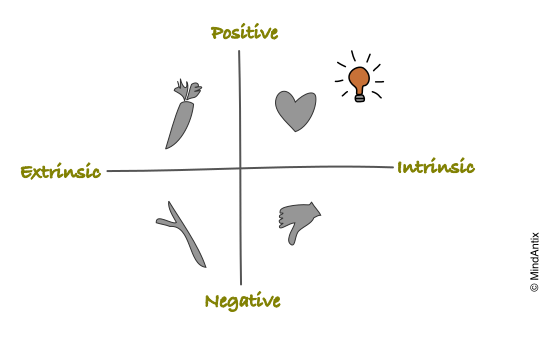In 1971, Edward Deci did an experiment on college students to understand motivation and performance. These students were given puzzles to solve which Deci believed they would be intrinsically motivated to solve. Students in the control group did not receive any money to work on the puzzles, while students in the experimental group were paid only on the second day. The experimenter gave a break in the middle of the experiment each day to see how long students played with the puzzles when left alone.
Deci found that students who were paid on the second day, spent longer on the puzzles during the break. However, on the third day when they were not paid, they spent significantly less time playing with the puzzles than the control group. Deci interpreted this as evidence that an external reward decreases the intrinsic motivation to engage in an activity.
Deci along with Ryan expanded on this work to propose the Self Determination Theory (SDT). The SDT outlines three universal psychological needs – autonomy, competence and relatedness – which govern individual motivation. Need for competence and autonomy form the basis of intrinsic motivation.
Monetary rewards have shown some benefit in performance if the task is more manual in nature or when people have identified with an activity’s value. For complex problems requiring creative problem solving skills, intrinsic motivation plays a bigger role.
Teresa Amabile, Professor at Harvard Business School and Creativity expert, has found plenty of evidence of what she calls the “Intrinsic Motivation Principle of Creativity”, namely that “people will be most creative when they feel motivated primarily by the interest, satisfaction, and challenge of the work itself-and not by external pressures.”
Given the strong connection between creativity and intrinsic motivation, here are three ways to maintain intrinsic motivation.
Praise, Don’t Reward
Praising instead of giving a monetary reward works better in improving intrinsic motivation, even though both are forms of external rewards. However, for praise to be effective it should focus on the effort as opposed to ability, should not convey low expectation and should not convey information about competence solely through social comparison.
Focus on Others
While intrinsic motivation drives creativity, it turns out that it drives the “originality” component of creativity and not the “useful” aspect. Prof. Adam Grant’s research has shown that focusing on solving others’ problems improves creativity in the “useful” aspect as well. As he explains, “perspective taking, as generated by prosocial motivation, strengthens the association between intrinsic motivation and creativity.”
Embrace failure
Any creative task by definition has a lot of uncertainty and success isn’t guaranteed. Creating a mindset where failure is appreciated for the knowledge it brings on what doesn’t work, can go a long way in building intrinsic motivation. In Prof. Amabile’s words, “… if people do not perceive any “failure value” for projects that ultimately do not achieve commercial success, they’ll become less and less likely to experiment, explore, and connect with their work on a personal level. Their intrinsic motivation will evaporate”

